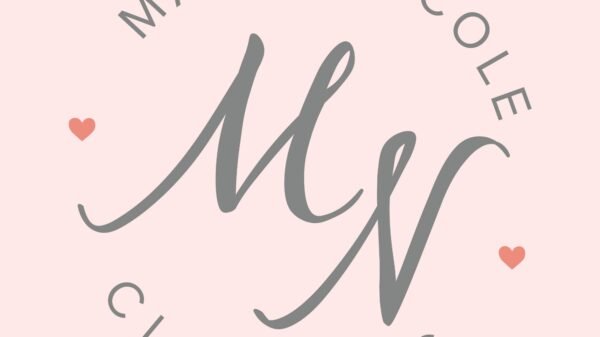The State of the Fashion Industry: Trends and Challenges in 2023
Stay up-to-date on the latest fashion industry trends and challenges. Learn about the changing consumer behavior, sustainable fashion, and the digital transformation of the industry.
KEY TAKEAWAYS
- Sustainability and ethical fashion are significant trends in the fashion industry in 2023.
- The use of sustainable materials and practices is on the rise.
- There is an increasing demand for ethical fashion brands.
- Technology and innovation are shaping the industry, with AI and data analytics playing a crucial role.
- Virtual and augmented reality experiences are becoming more prevalent in fashion.
- Inclusivity and diversity are important considerations, with a focus on body positivity and breaking traditional stereotypes.
- Fast fashion is a major challenge due to its negative environmental impact.
- Labor and supply chain issues, including fair wages and transparency, are challenges that need to be addressed.
- Digital transformation and e-commerce are reshaping the retail landscape.
- Real-world scenarios highlight the successful implementation of sustainability practices, overcoming supply chain challenges, and adapting to the digital age.
- Continuous adaptation and innovation are crucial for brands in the fashion industry.
- The future of the fashion industry holds potential for further developments and advancements.
Welcome to the fascinating world of fashion! The fashion industry is a dynamic landscape that constantly evolves with each passing year. In 2023, it stands at the forefront of trends and challenges, shaping the way you dress and express yourself. This article delves into the state of the fashion industry, exploring the latest trends and highlighting the key challenges faced in this ever-changing realm.
As you step into 2023, sustainability and ethical fashion take center stage. The industry witnesses a growing emphasis on environmentally-friendly materials and practices, as well as the rise of ethical fashion brands. Technology and innovation are also driving forces, revolutionizing the way you experience fashion with the integration of AI and virtual reality.
Moreover, inclusivity and diversity become powerful catalysts for change, challenging traditional stereotypes and embracing body positivity. However, the fashion industry also faces its fair share of challenges, particularly with the negative impact of fast fashion and the need for fair labor practices.
This article will explore real-world scenarios, showcasing successful sustainability initiatives, supply chain triumphs, and the digital transformation of fashion retailers.
Current Trends in the Fashion Industry
The fashion industry is undergoing a transformative phase in 2023, marked by several key trends that shape its landscape. This section explores three significant trends: sustainability and ethical fashion, technology and innovation, and inclusivity and diversity.
A.Sustainability and Ethical Fashion
Rise of sustainable materials and practices
In response to growing environmental concerns, the fashion industry is witnessing a surge in the use of sustainable materials and practices. Designers and brands are increasingly opting for eco-friendly fabrics such as organic cotton, hemp, and recycled polyester. Additionally, innovative technologies are enabling the development of sustainable alternatives, including lab-grown leather and biodegradable textiles. This shift towards sustainability aims to minimize the industry’s carbon footprint and reduce waste throughout the supply chain.
Increasing demand for ethical fashion brands
Consumers are becoming more conscious of the social and ethical implications of their fashion choices. As a result, there is a rising demand for ethical fashion brands that prioritize fair trade, ethical sourcing, and transparent supply chains. Consumers now expect brands to demonstrate social responsibility and ensure the well-being of garment workers. Ethical fashion brands that align with these values are gaining popularity and carving out a niche in the market.
- Technology and Innovation
Integration of AI and data analytics in the fashion
The fashion industry is embracing technology and leveraging artificial intelligence (AI) and data analytics to enhance various aspects of the business. AI algorithms are being used for trend forecasting, enabling brands to anticipate consumer preferences and make data-driven decisions. Data analytics help optimize supply chain management, inventory control, and personalized customer experiences. Moreover, AI-powered virtual stylists and chatbots are revolutionizing the way consumers engage with brands, providing personalized recommendations and enhancing the overall shopping experience.
Virtual and augmented reality experiences in the industry
Virtual and augmented reality (VR/AR) technologies are breaking barriers in the fashion industry, providing immersive experiences for consumers. Virtual try-on tools allow shoppers to visualize how garments will look and fit before making a purchase online. Fashion brands are also incorporating VR/AR experiences into their marketing strategies, offering virtual fashion shows and interactive campaigns. These technologies not only enhance customer engagement but also provide new avenues for creativity and storytelling within the industry.
- Inclusivity and Diversity
Embracing body positivity and diverse representation
The fashion industry is making strides towards inclusivity by embracing body positivity and celebrating diverse representations of beauty. Brands are challenging conventional beauty standards by featuring models of different body types, sizes, and ethnic backgrounds. The inclusion of diverse models in fashion campaigns and runway shows sends a powerful message of acceptance and promotes body confidence among consumers.

Photo: Reuters
Gender-neutral Fashion and breaking traditional stereotypes
Gender-neutral fashion is gaining momentum, blurring the lines between traditionally defined gender roles and styles. Designers are creating clothing that transcends traditional gender boundaries, offering gender-fluid or unisex collections. This inclusive approach promotes self-expression and allows individuals to dress in ways that align with their identity, regardless of societal expectations.
The current trends in the fashion industry reflect a shifting landscape towards sustainability, technological advancements, and a more inclusive and diverse representation. By embracing these trends, fashion brands can navigate the challenges of 2023 while meeting the evolving demands and preferences of consumers.
Key Challenges in the Fashion Industry
The fashion industry, despite its glamour and creativity, faces a multitude of challenges in 2023. This section highlights three major challenges: fast fashion and its environmental impact, labor and supply chain issues, and the digital transformation and e-commerce landscape.
- Fast Fashion and Environmental Impact
Negative Consequences of Disposable Fashion
Fast fashion, characterized by inexpensive, rapidly produced clothing, contributes to significant environmental degradation. The industry’s high demand for cheap and trendy garments leads to overproduction, excessive waste, and increased carbon emissions. Fast fashion’s reliance on synthetic materials and hazardous chemicals further exacerbates its environmental footprint, polluting waterways and causing harm to ecosystems.
Push for More Sustainable Practices
As environmental concerns grow, there is a pressing need for the fashion industry to adopt more sustainable practices. Brands are increasingly under pressure to reduce their carbon emissions, implement circular fashion initiatives, and invest in responsible sourcing and manufacturing processes. Embracing sustainable materials, promoting recycling and upcycling, and implementing eco-friendly packaging are some strategies that can help mitigate the environmental impact of the fashion industry.
- Labor and Supply Chain Issues
Fair Wages and Working Conditions for Garment Workers
One of the critical challenges in the fashion industry is ensuring fair wages and decent working conditions for garment workers, especially in developing countries where production is often outsourced. Many workers face exploitative practices, including long hours, unsafe working environments, and insufficient pay. Brands and industry stakeholders must prioritize fair labor practices, ethical sourcing, and the protection of workers’ rights throughout the supply chain.
Transparency in Supply Chains and Combating Exploitation
Transparency in supply chains is a significant challenge for the fashion industry. Ensuring visibility and accountability throughout the complex network of suppliers and subcontractors is crucial to combat exploitation and human rights violations. Brands need to work towards supply chain transparency, conducting regular audits, and collaborating with suppliers to improve working conditions and protect workers’ rights.
- Digital Transformation and E-commerce
Balancing Online and Offline Retail Experiences
Digital transformation and the rise of e-commerce present challenges for fashion brands in balancing online and offline retail experiences. As more consumers shift towards online shopping, brick-and-mortar stores face the challenge of remaining relevant and providing unique in-store experiences. Brands need to adapt by integrating digital technologies in physical stores, offering personalized services, and creating seamless omnichannel experiences that connect online and offline touchpoints.
Protecting Consumer Data and Cybersecurity Challenges
With the increasing reliance on digital platforms and data-driven strategies, cybersecurity becomes a critical challenge for the fashion industry. Brands need to prioritize the protection of customer data, ensuring secure online transactions, and safeguarding sensitive information. Implementing robust cybersecurity measures, educating employees about potential risks, and complying with data protection regulations are vital steps in addressing this challenge.
The fashion industry’s key challenges demand a collective effort from brands, consumers, and industry stakeholders to foster sustainability, fair labor practices, transparency, and data security. By addressing these challenges head-on, the industry can pave the way for a more responsible and resilient future.
Real-World Scenarios in the Fashion Industry
The fashion industry is witnessing real-world scenarios where brands are successfully tackling challenges and embracing emerging trends. This section presents three case studies that exemplify these scenarios: a fashion brand’s implementation of sustainable practices, overcoming supply chain challenges in a global brand, and a traditional retailer’s successful transformation into the witnessing the digital age.
Case Study 1: Successful Implementation of Sustainable Practices by a Fashion Brand
Overview of the Brand’s Sustainable Initiatives
This case study delves into a fashion brand that has successfully implemented sustainable practices throughout its operations. The brand focuses on using eco-friendly materials, reducing waste, and implementing responsible manufacturing processes. They have incorporated sustainable sourcing, adopted recycling and upcycling initiatives, and implemented energy-efficient production methods.
Impact on Brand Reputation and Consumer Loyalty
By prioritizing sustainability, this brand has experienced a significant boost in its reputation and consumer loyalty. Consumers resonate with the brand’s commitment to environmental responsibility, and their transparent approach to sustainability has fostered trust among customers. The brand’s sustainable initiatives have not only attracted environmentally conscious consumers but have also led to increased brand loyalty and advocacy.
Case Study 2: Overcoming Supply Chain Challenges in a Global Fashion Brand
Identification of Supply Chain Issues and Their Resolution
This case study explores a global fashion brand that faced complex supply chain challenges. They encountered issues such as poor working conditions, inconsistent quality control, and delays in production and distribution. To address these challenges, the brand initiated comprehensive audits of suppliers strengthened communication channels, and implemented stricter compliance standards. They also fostered long-term partnerships with suppliers, providing training and support to ensure adherence to ethical and quality standards.

Photo:
Reuters
Lessons Learned and Best Practices for Other Brands
Through their experience, this fashion brand learned valuable lessons and established best practices that can guide other brands facing similar supply chain challenges. They highlight the importance of transparency, supplier collaboration, and continuous monitoring of working conditions. Sharing these best practices can inspire other brands to proactively address supply chain issues, foster positive change, and ensure ethical practices throughout their operations.
Case Study 3: Adapting to the Digital Age: A Traditional Retailer’s Online Transformation
Strategies Employed to Enhance the Online Shopping Experience
This case study focuses on a traditional retailer that successfully adapted to the digital age by embracing online transformation. The retailer invested in a user-friendly website, implemented efficient inventory management systems, and enhanced product visualization through high-quality images and detailed descriptions. They also integrated personalized recommendations and seamless checkout processes to provide a smooth online shopping experience.
Increased Sales and Customer Engagement as a Result
As a result of their online transformation, the traditional retailer experienced increased sales and heightened customer engagement. By providing a convenient and engaging online shopping experience, they expanded their customer base, reached new markets, and boosted overall sales. The retailer’s successful integration of digital technologies helped bridge the gap between online and offline channels, creating a cohesive and satisfying customer journey.
These real-world scenarios demonstrate how fashion brands can effectively address challenges and embrace trends. By implementing sustainable practices, optimizing supply chains, and adapting to the digital age, brands can position themselves for success in the ever-evolving fashion industry of 2023.
Final Thoughts
The fashion industry in 2023 faces both trends and challenges. Sustainability and ethical fashion are gaining prominence, driven by the rise of sustainable materials and the demand for ethical brands. Technology and innovation, such as AI and virtual reality, are reshaping the industry. Inclusivity and diversity are also becoming more prevalent.
However, challenges persist. Fast fashion’s environmental impact and labor issues require attention, as does the need to balance digital transformation with consumer data protection.
Real-world case studies demonstrate the successful implementation of sustainable practices, overcoming supply chain challenges, and adapting to the digital age.
To thrive in 2023, the fashion industry must embrace these trends and tackle challenges head-on. Prioritizing sustainability, fair labor practices, inclusivity, and digital innovation is essential for a responsible and inclusive future.






































Comment Template